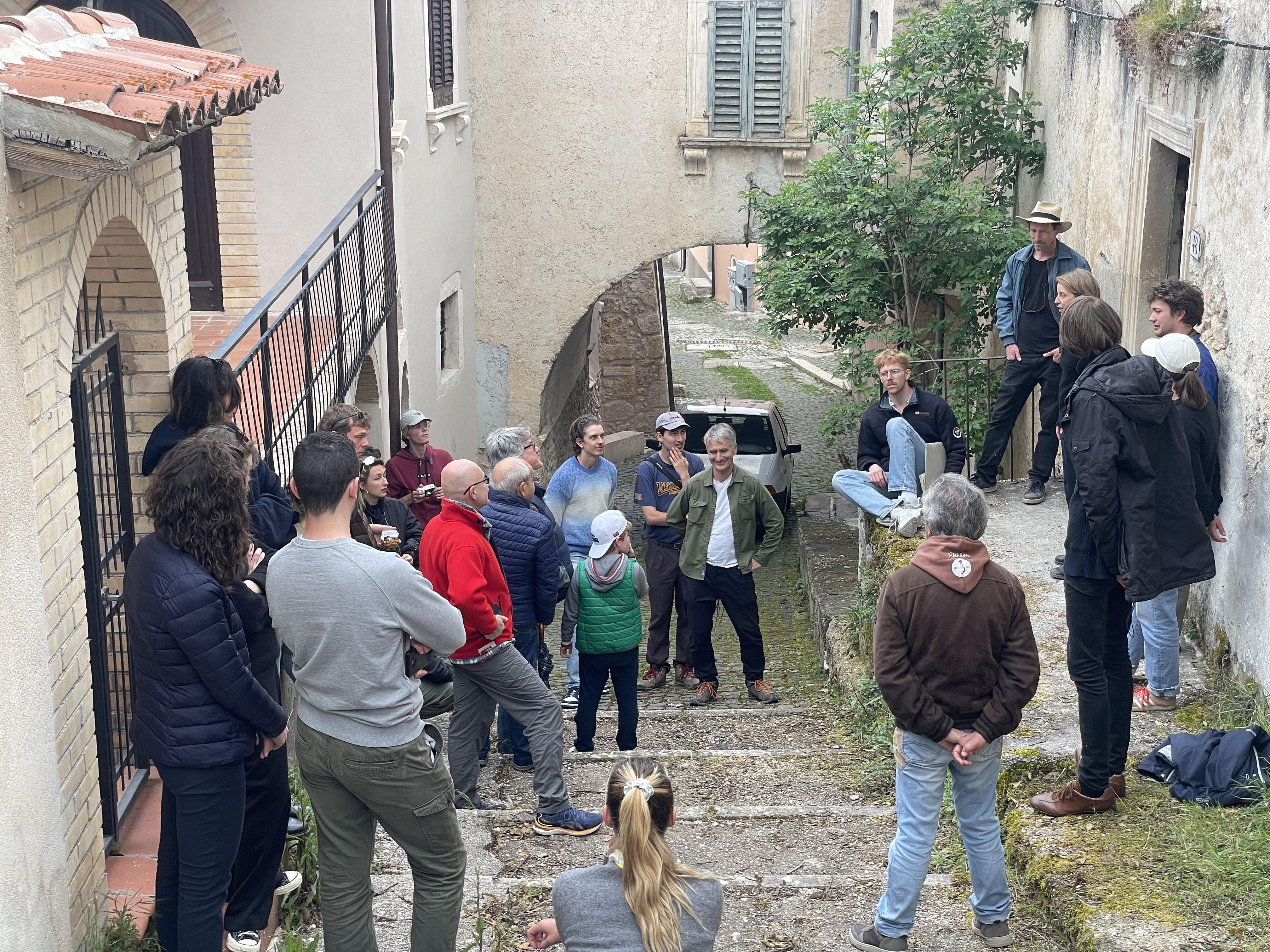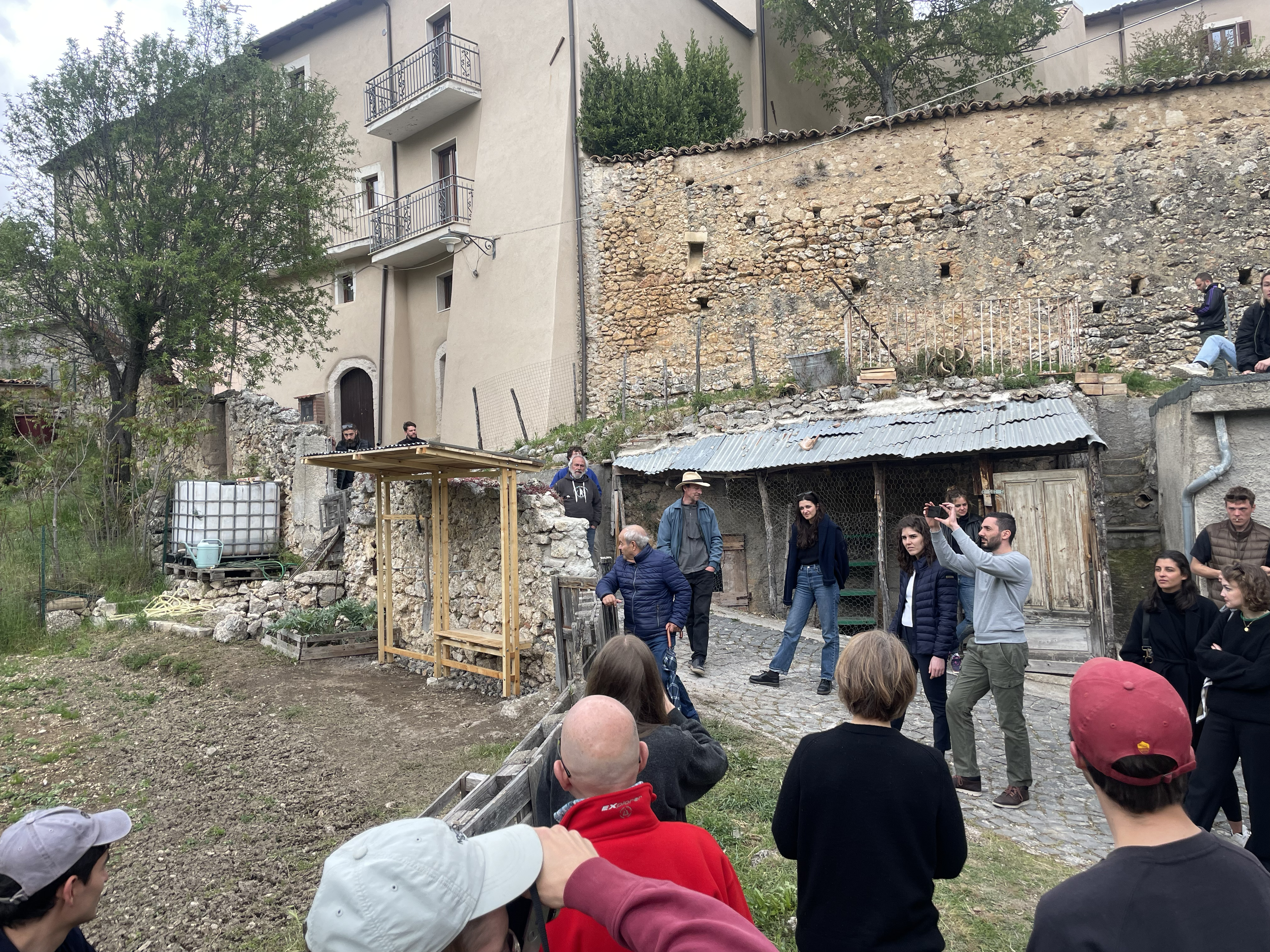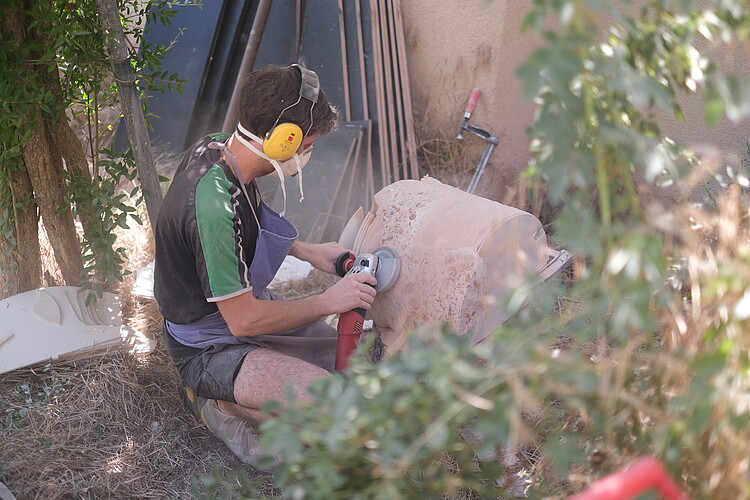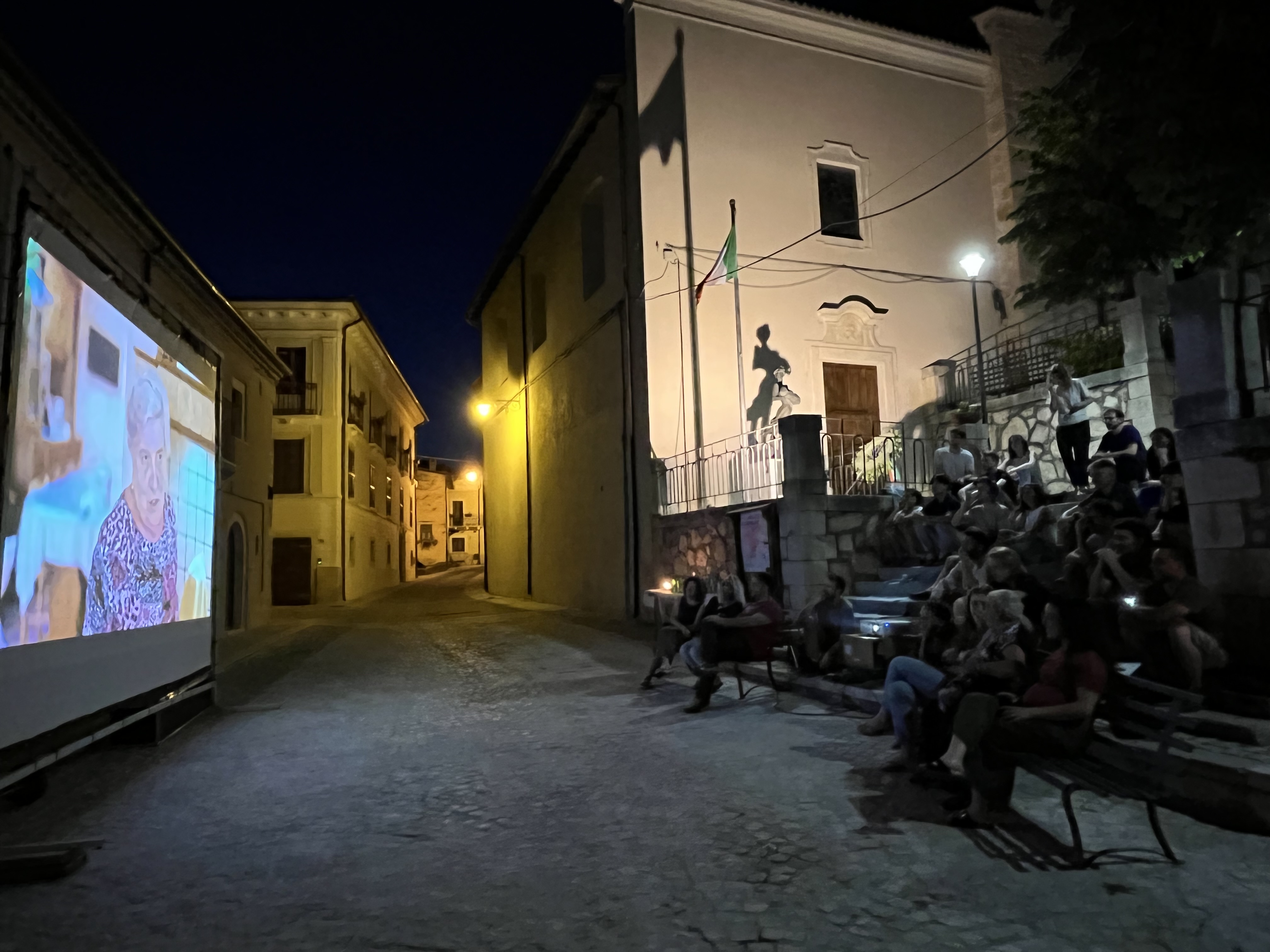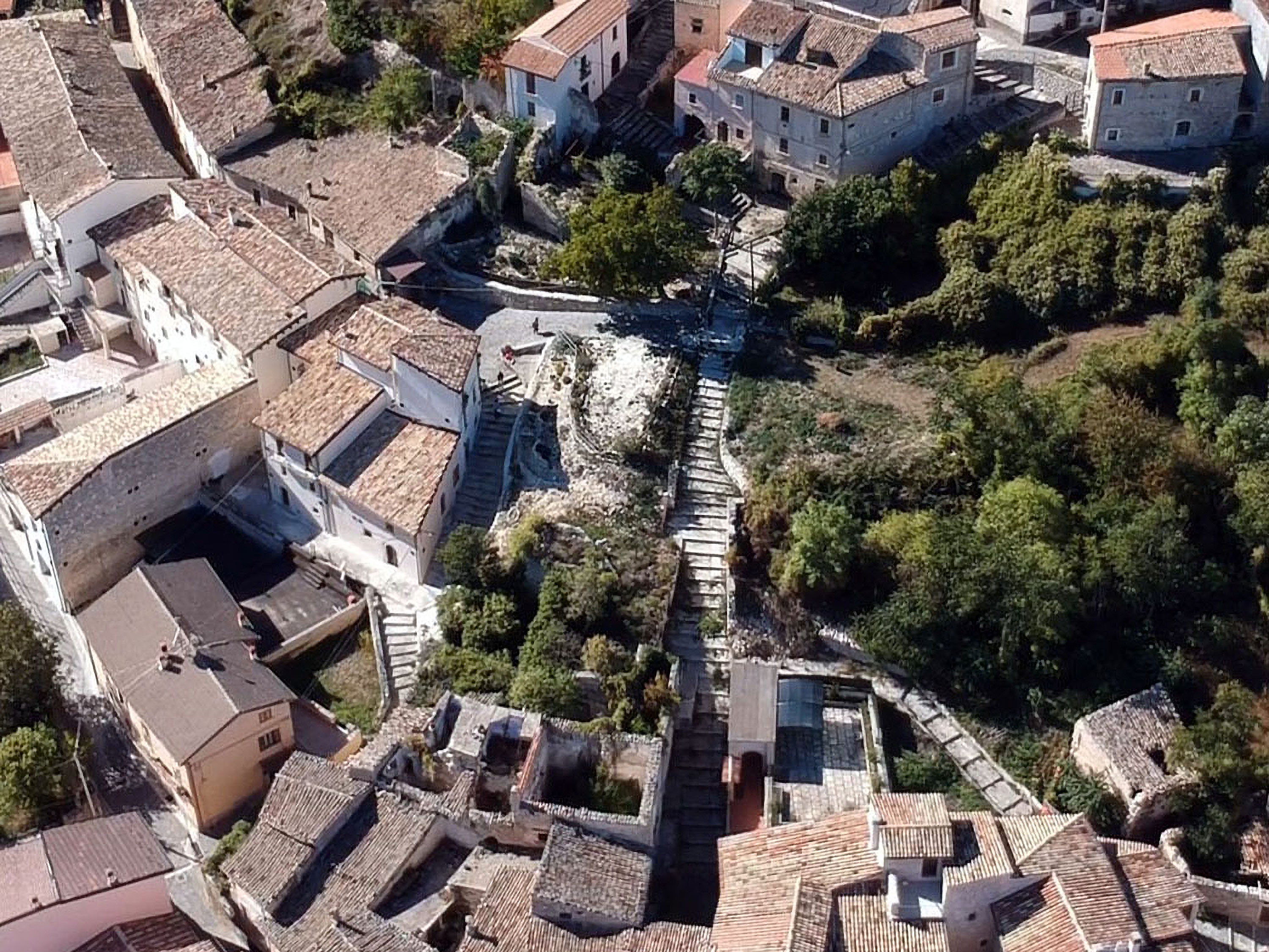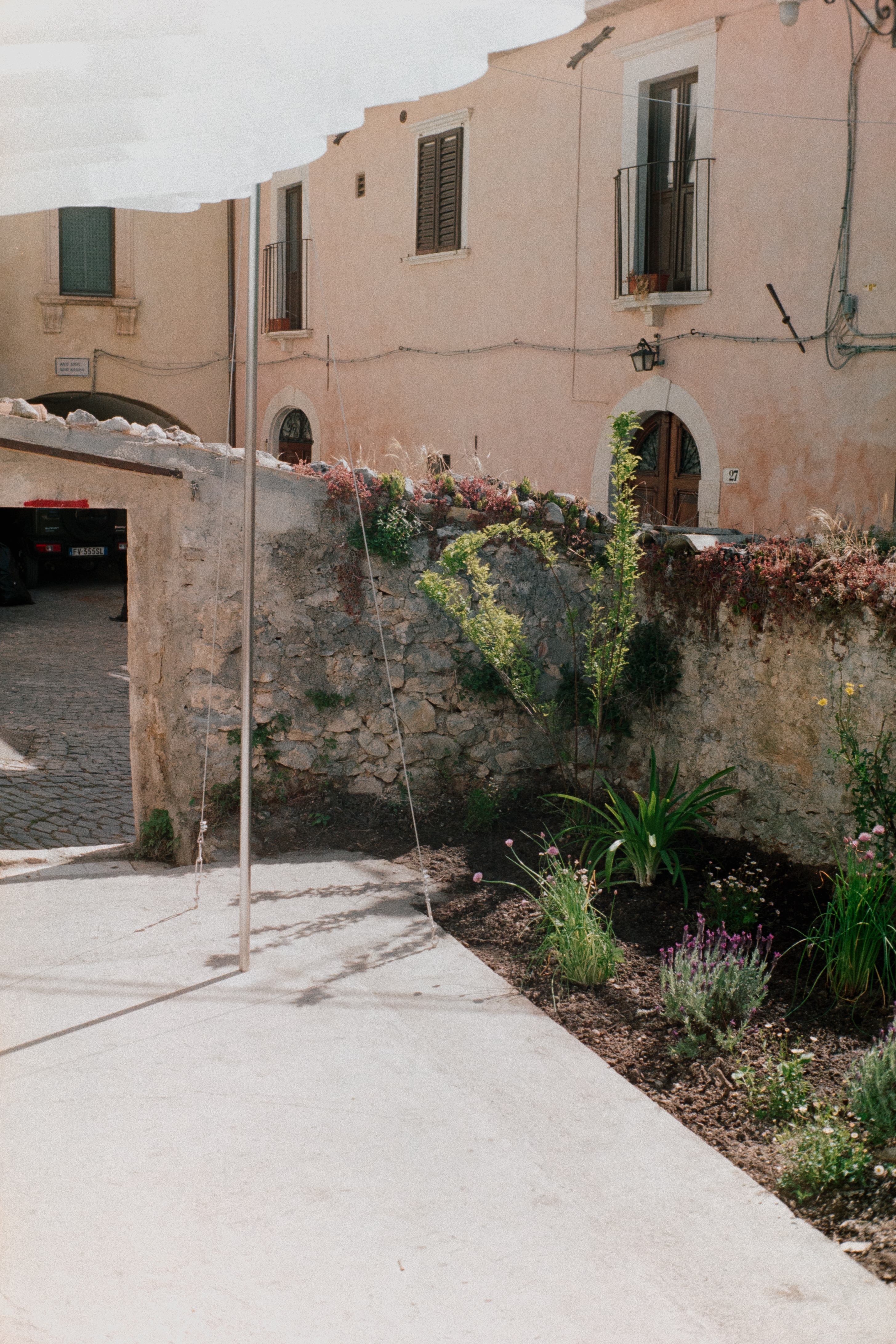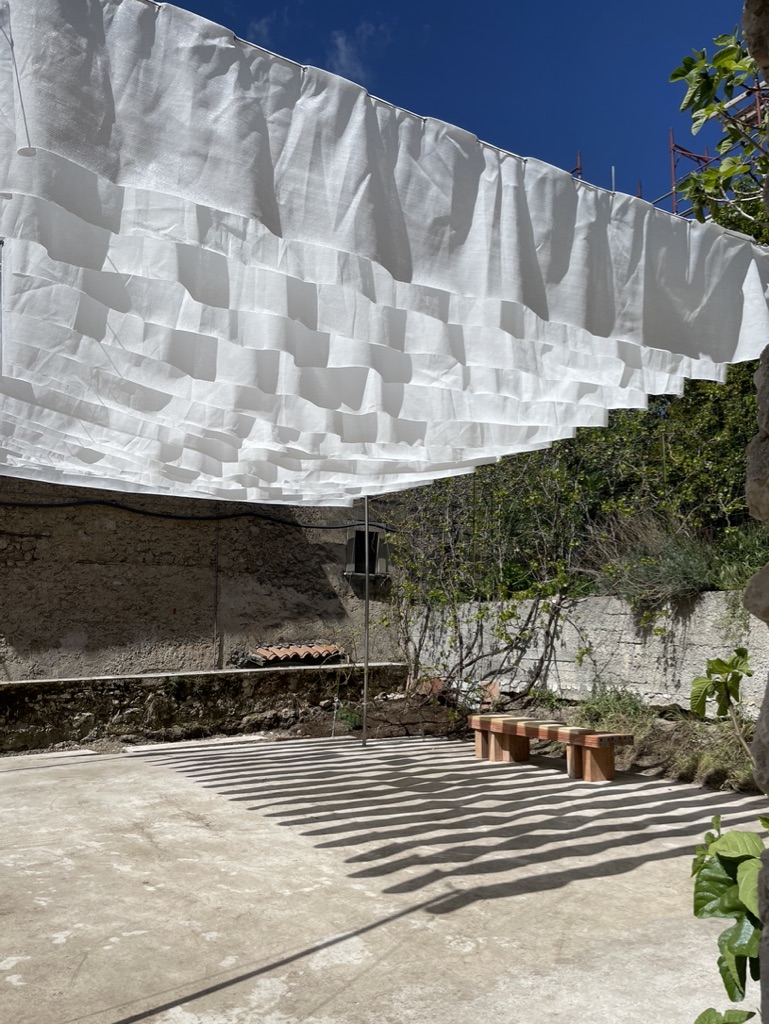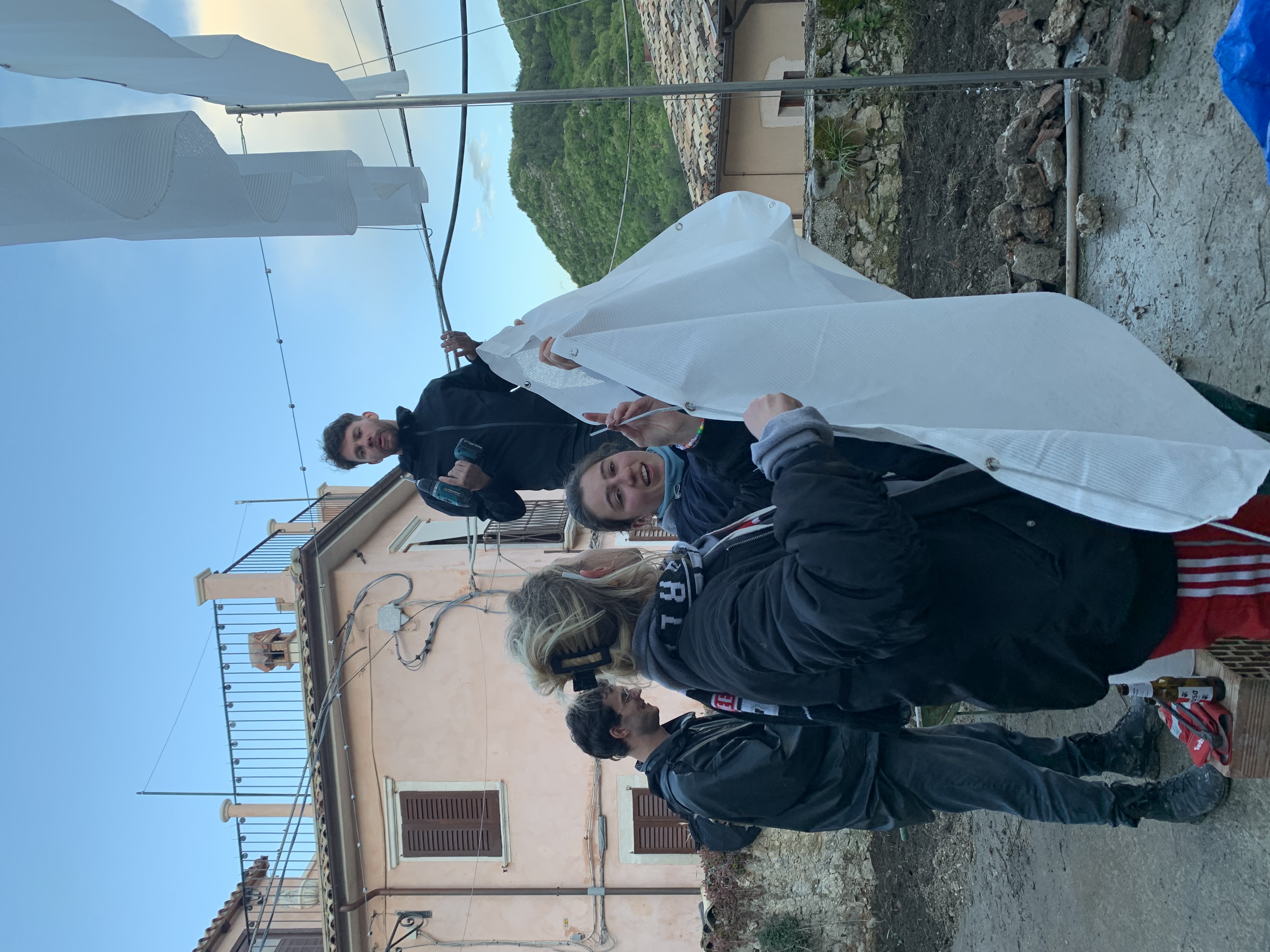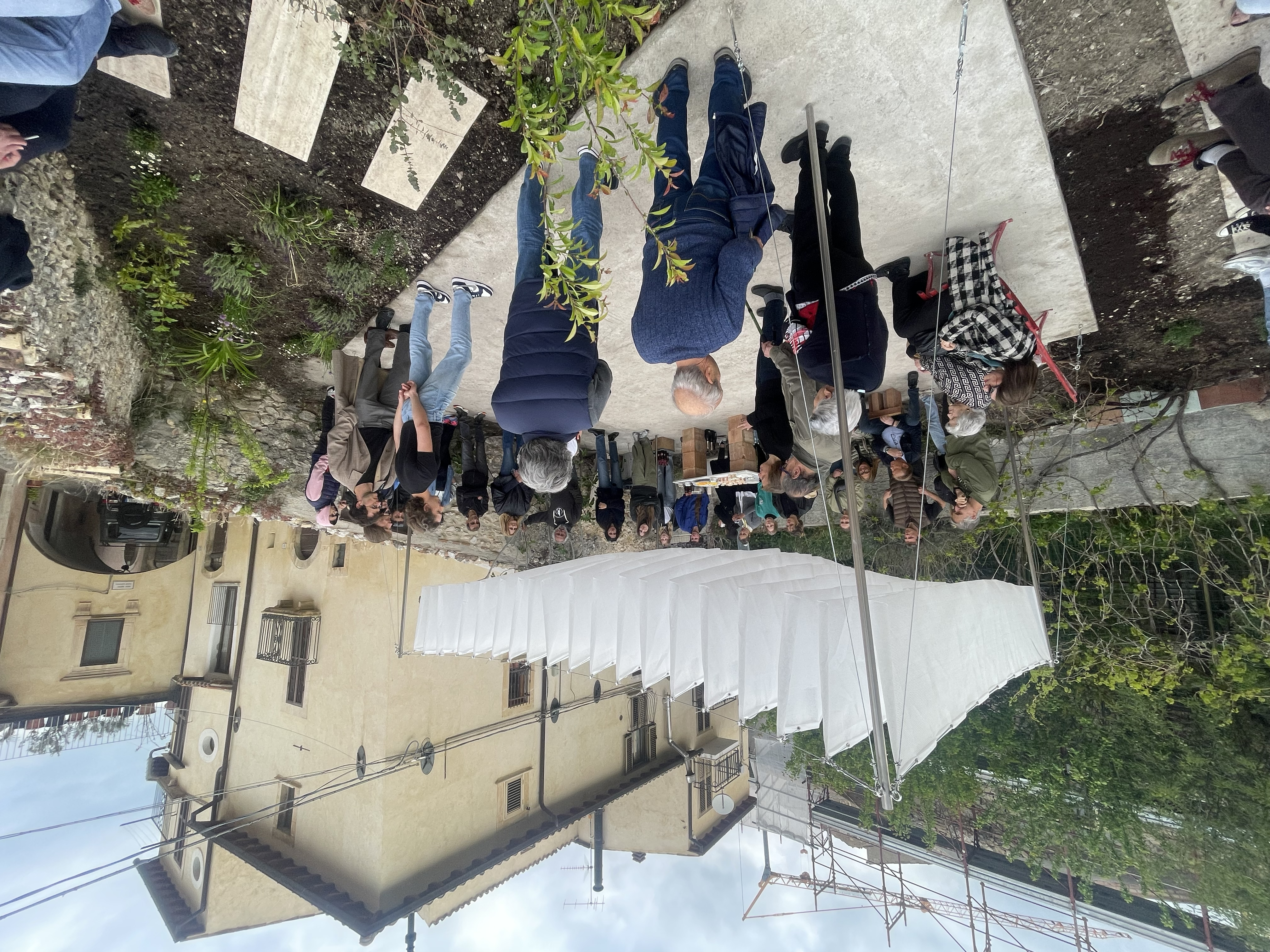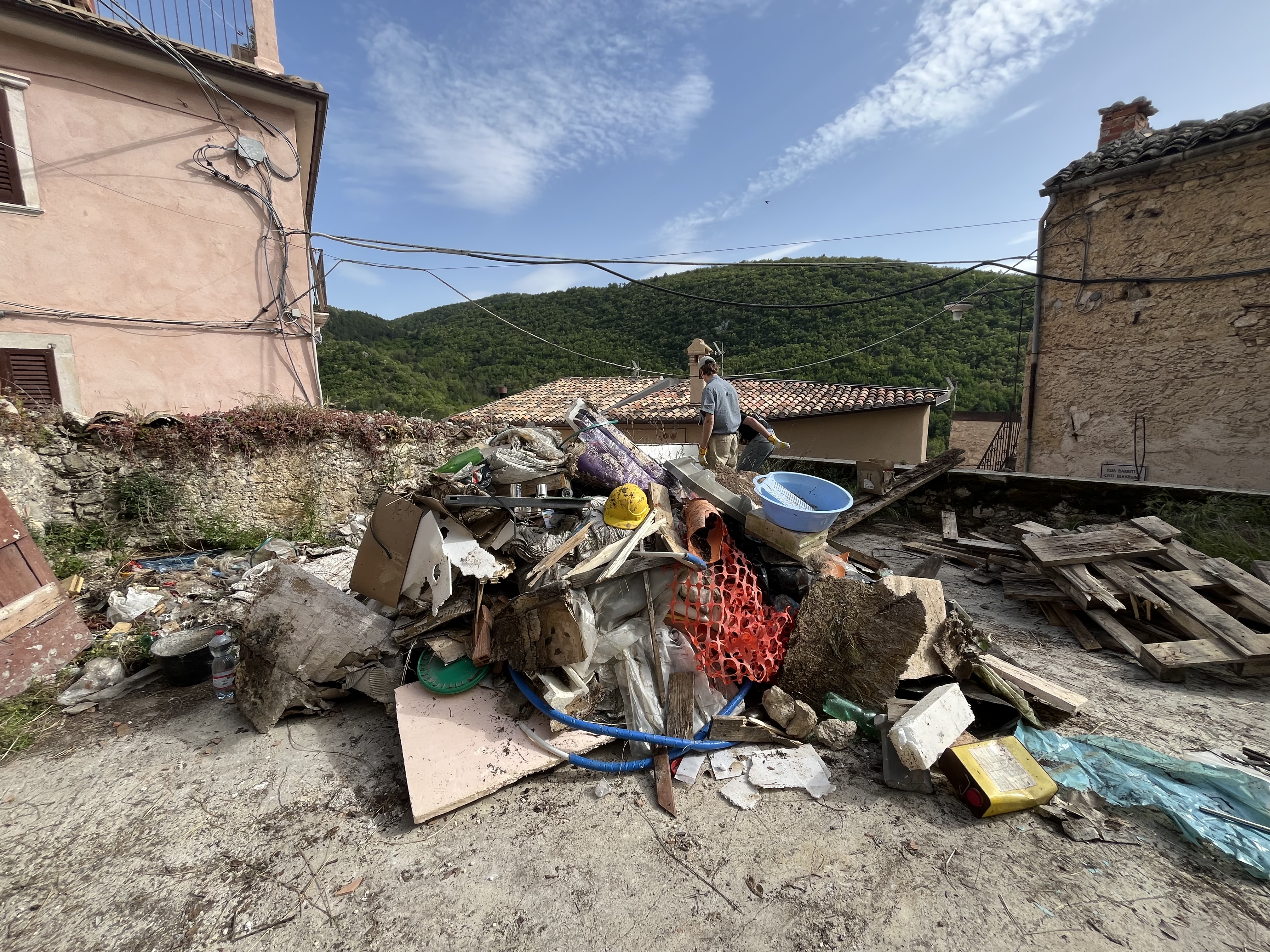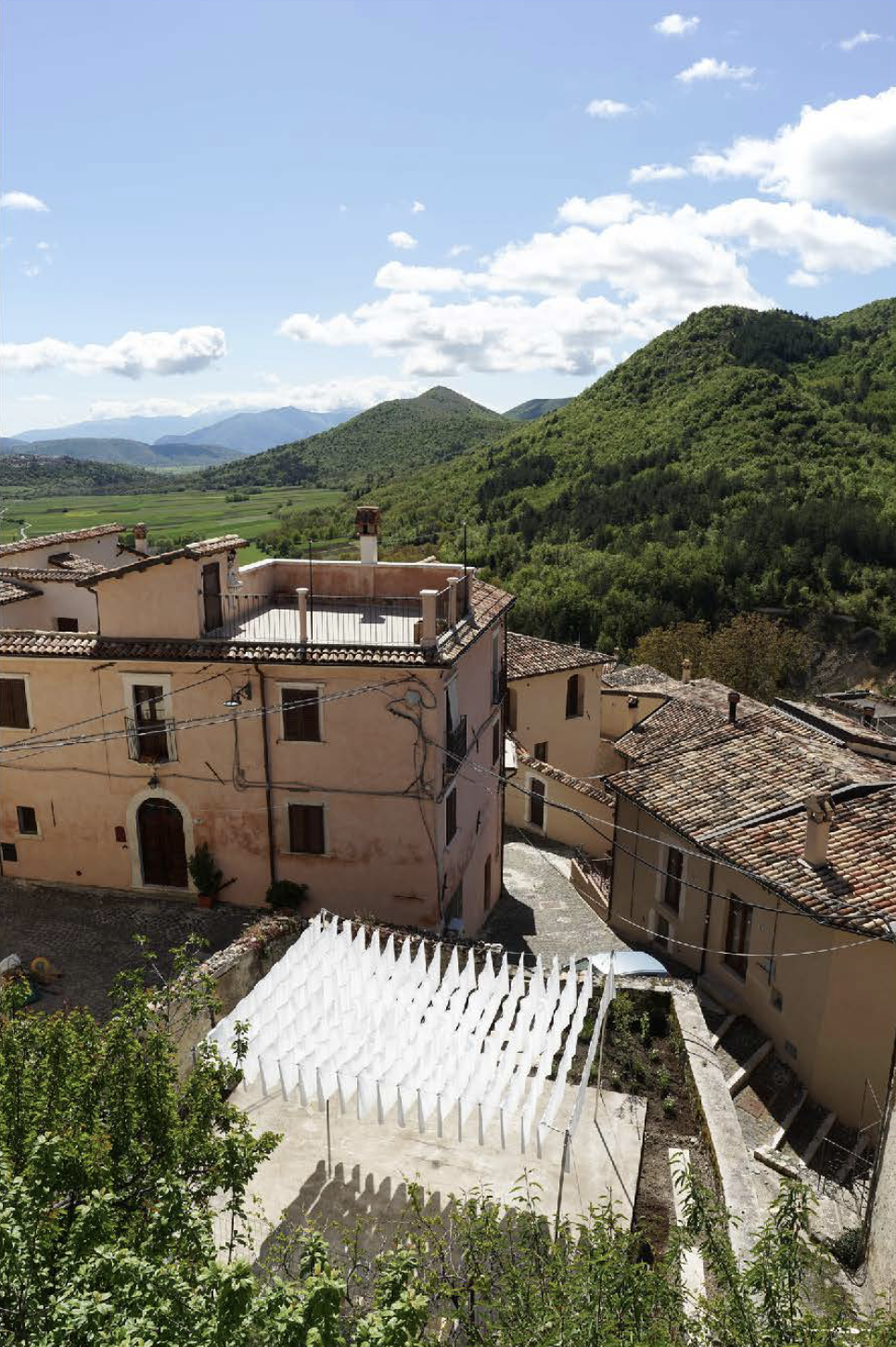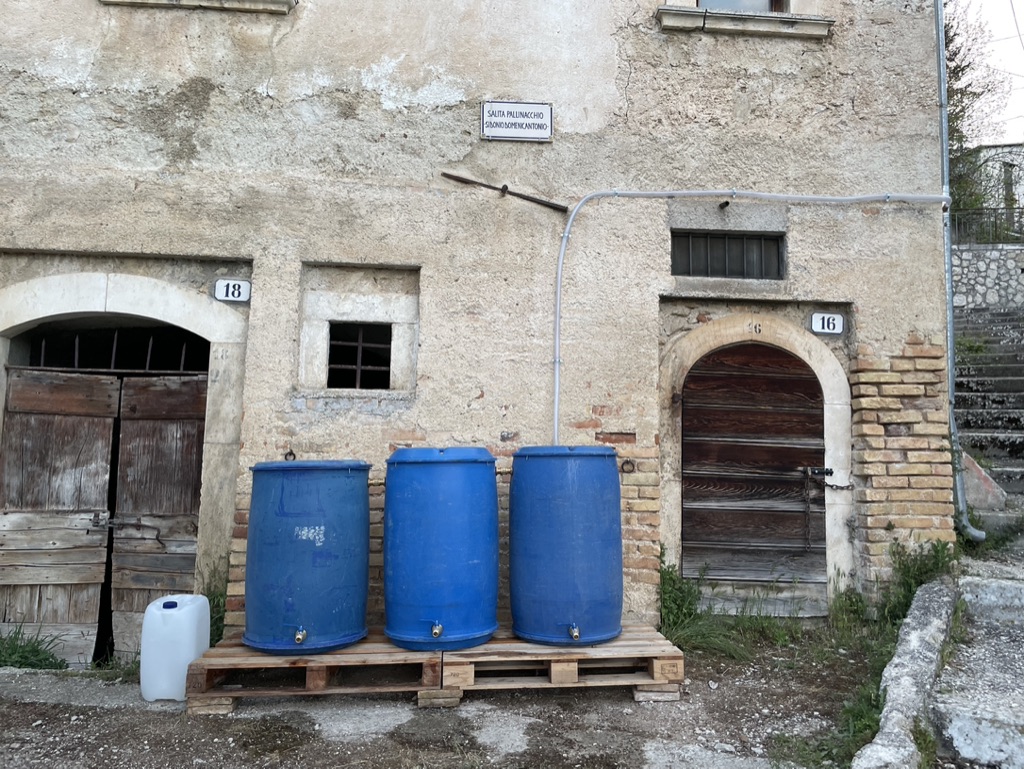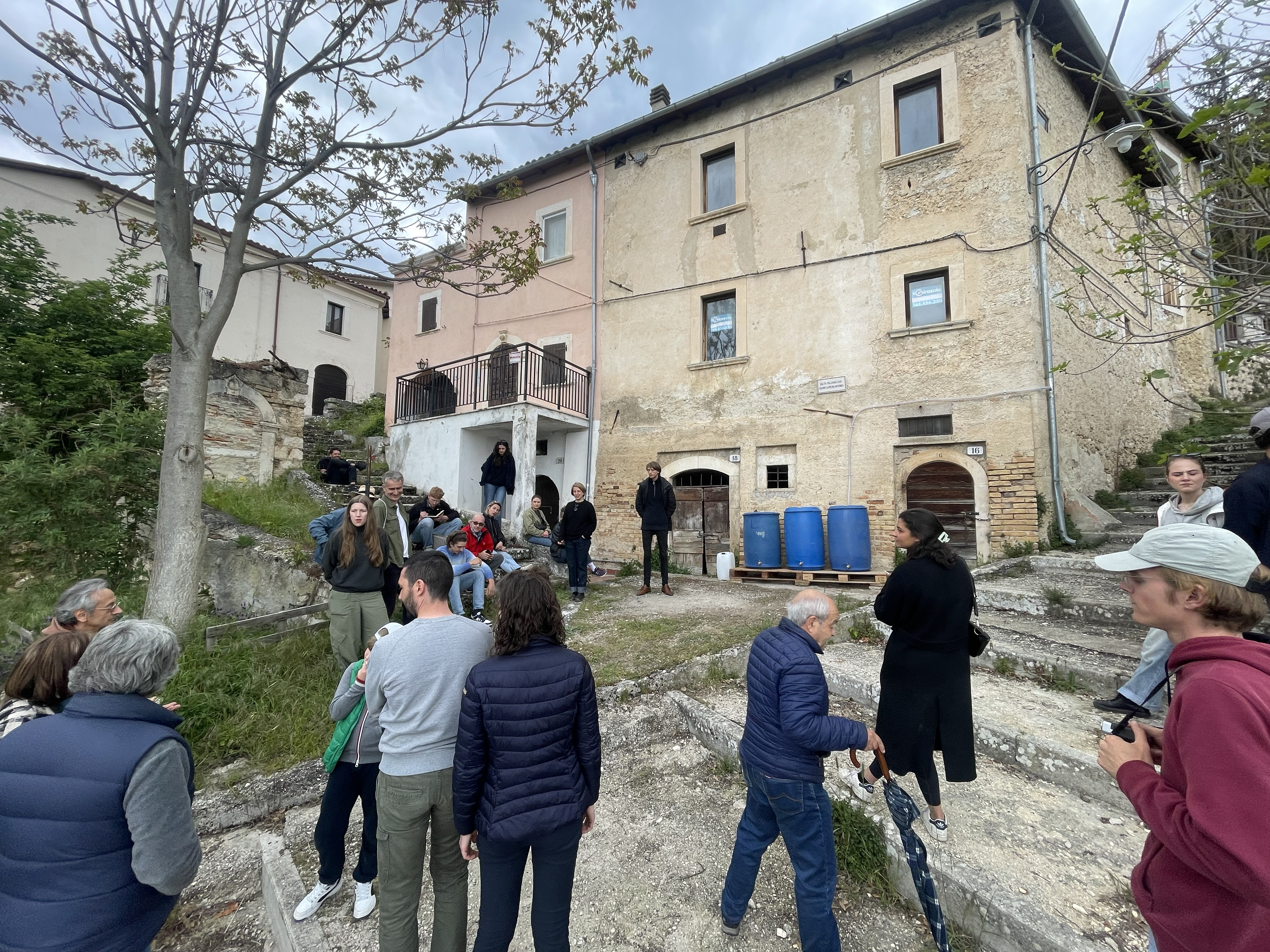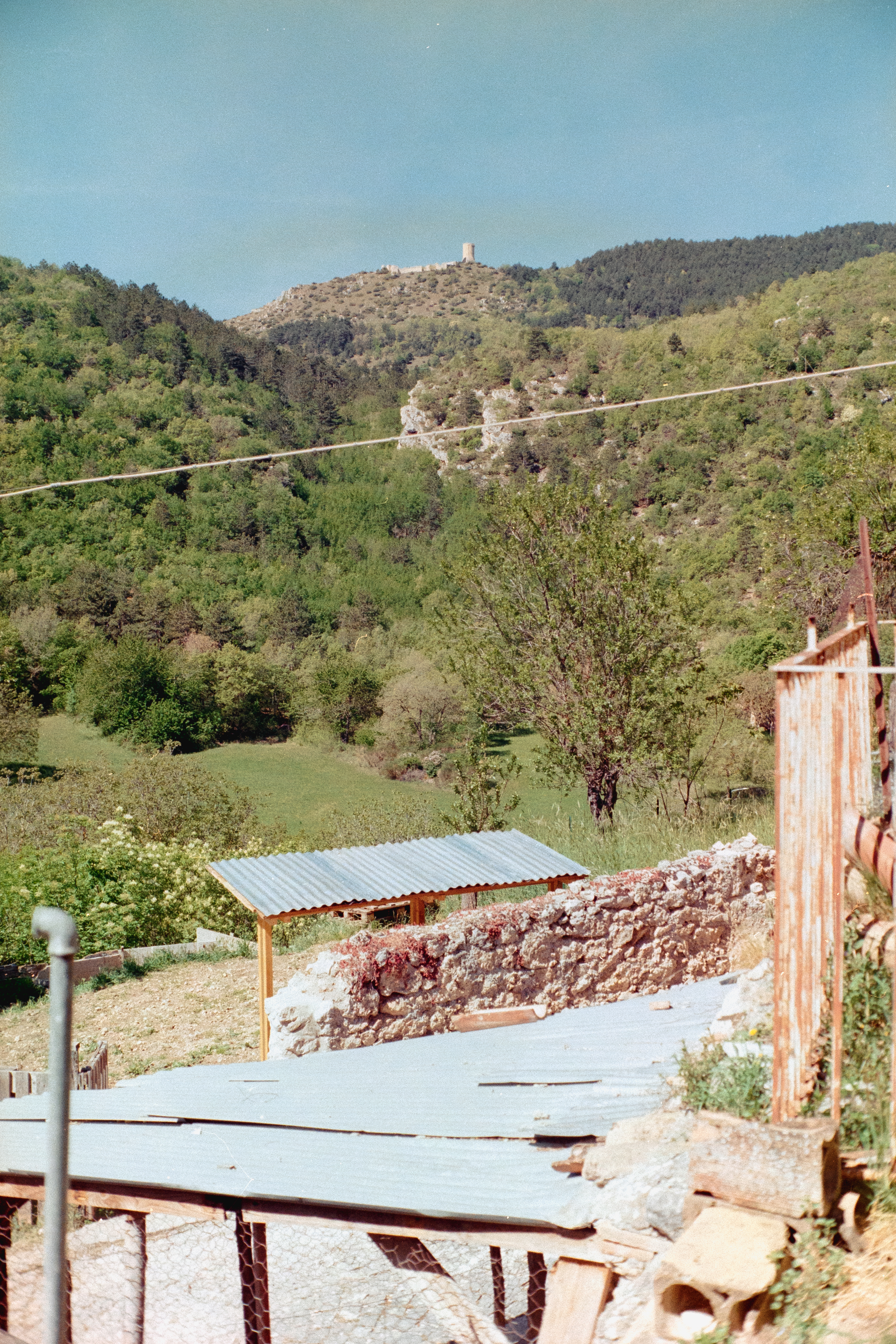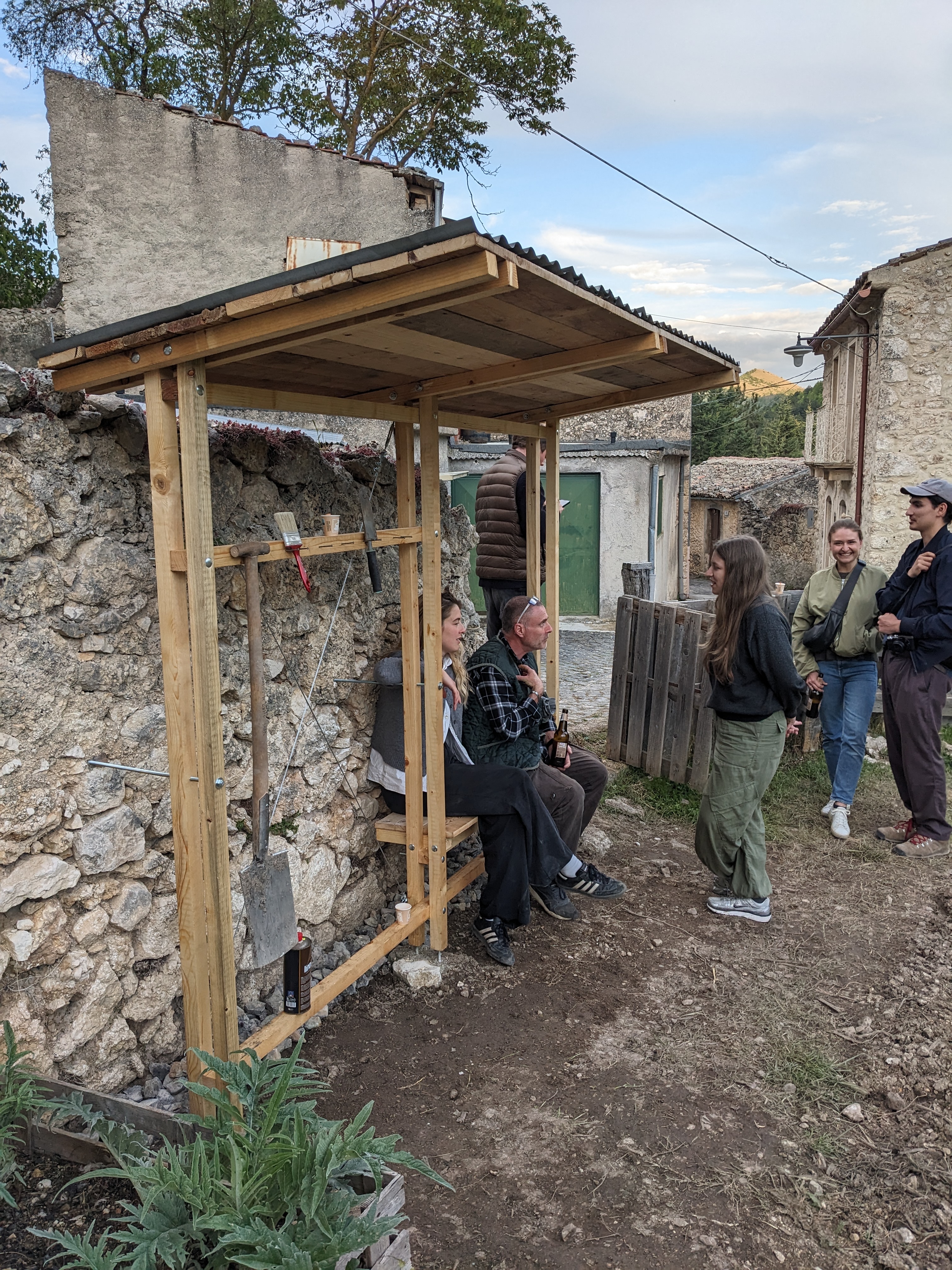Retelling the rural
Retelling the rural - Caporciano
Caporciano, a small village in Abruzzo, barely two hours by car from Rome, is becoming extinct – a fate it shares with many other small towns in the region that have been hit by migration to the cities since the mid-twentieth century. The devastating earthquake of 2009 destroyed not only many houses, but also many residents’ confidence. The reconstruction effort, which is heavily funded by the Italian state, is mainly aiming to restore past conditions.
Italy
Caporciano
Prototype level
Yes
Yes
Yes
No
No
066022: Caporciano (IT)
The ongoing initiative "Retelling the Rural: Caporciano | The common in between" aims to revitalize the shrinking village of Caporciano in the Abruzzo region (Italy) in the sense of a beacon project. The project started in autumn 2021 when Tratturo Magno 101 (association of local stakeholders) invited the architecture faculty of the UdK Berlin for a first field trip. It seeks to address the socio-economic decline exacerbated by the 2009 earthquake. Through architectural and artistic interventions, the project engages local residents in reimagining their public spaces, fostering community resilience, and promoting cultural heritage. Activities include workshops, exhibitions, and the co-creation of new public greenspaces, transforming neglected areas into vibrant communal spaces. At the same time they address the omnipresent issue of water scarcity in a low-threshold manner and further strategies of sustainability. Four permanent and temporary interventions have already been realized as part of the cooperation.
The current project involves the design of an earthquake-induced wasteland, which is located at a neuralgic point that connects the upper part of the town with its lower part. While the municipality is gradually restoring the surrounding infrastructure, this square is intended to create a pleasant place to spend time on the footpath from the upper to the lower village. The square offers a spectacular view of the landscape and the nearest village on the Navelli plateau, as well as of the fallow land on the slope, which is already largely overgrown with plants.
This inaccessible area is to be given an additional water supply through the use of collected rainwater and transformed into a lush garden as a habitat for animals and plants. The aim is to create a public space which, through its connection with the staging of the wild gardens, offers a sensually perceptible threshold to the transition into the distant landscape and makes the beauty of the place tangi
The current project involves the design of an earthquake-induced wasteland, which is located at a neuralgic point that connects the upper part of the town with its lower part. While the municipality is gradually restoring the surrounding infrastructure, this square is intended to create a pleasant place to spend time on the footpath from the upper to the lower village. The square offers a spectacular view of the landscape and the nearest village on the Navelli plateau, as well as of the fallow land on the slope, which is already largely overgrown with plants.
This inaccessible area is to be given an additional water supply through the use of collected rainwater and transformed into a lush garden as a habitat for animals and plants. The aim is to create a public space which, through its connection with the staging of the wild gardens, offers a sensually perceptible threshold to the transition into the distant landscape and makes the beauty of the place tangi
Public space
Water scarcity
Beauty of Landscape
Cultural identity
Participation
The sustainability objectives of “Retelling the Rural” focus on ecological resilience, resource efficiency and environmental responsibility. The project focuses on the adaptive reuse of existing structures. The integration of overgrown gardens, ruins and green spaces are the material of the visionary design concepts. Community gardens and sustainable land use practices are intended to promote biodiversity and local food production. Energy-efficient designs and water conservation strategies will be incorporated into the planning of the new public space.
The municipality of Caporciano, for example, is not only struggling with the effects of global climate change but also facing additional challenges related to the regional water balance. These issues have been exacerbated by the sinking groundwater levels caused by the construction of a tunnel through the nearby Gran Sasso. As a result, wells can no longer be used. Calculations by the UdK Berlin have shown that Caporciano could potentially collect approximately 25 million liters of water annually via the rooftops of the town. Raising awareness of this potential through practical interventions is a key concern in terms of the long-term and sustainable development of Caporciano.
By engaging residents in sustainable practices, the project builds local capacity for environmental management, reduces the environmental footprint and creates a model for climate-resilient rural communities. This holistic approach is designed to experimentally develop how rural areas can thrive through the implementation of “design seed cells” (see also “methodology and approach”). The design seed cells are low-threshold, easily adaptable, and replicable. Residents can plan and implement interventions together with students, benefiting from these interventions while also adapting and reconstructing them to suit their own needs. This multiplier effect is intended to drive transformation in the long term.
The municipality of Caporciano, for example, is not only struggling with the effects of global climate change but also facing additional challenges related to the regional water balance. These issues have been exacerbated by the sinking groundwater levels caused by the construction of a tunnel through the nearby Gran Sasso. As a result, wells can no longer be used. Calculations by the UdK Berlin have shown that Caporciano could potentially collect approximately 25 million liters of water annually via the rooftops of the town. Raising awareness of this potential through practical interventions is a key concern in terms of the long-term and sustainable development of Caporciano.
By engaging residents in sustainable practices, the project builds local capacity for environmental management, reduces the environmental footprint and creates a model for climate-resilient rural communities. This holistic approach is designed to experimentally develop how rural areas can thrive through the implementation of “design seed cells” (see also “methodology and approach”). The design seed cells are low-threshold, easily adaptable, and replicable. Residents can plan and implement interventions together with students, benefiting from these interventions while also adapting and reconstructing them to suit their own needs. This multiplier effect is intended to drive transformation in the long term.
The aesthetics of places like Caporciano arise from a cultural diversity of structural details, spatial situation and dialogue with the landscape, all of which are shaped by time as a shaping factor. The careful field studies and initial interventions by UdK teams in recent years are based on a continuation of this narrative. The planned project builds on these results and relies on the staging of a strong sensory experience through the element of water, local materials, colors and formal language, and on a strong emotional connection to the history of the people and their place. The situation chosen for the spatial intervention combines all of these elements. The place is located at the junction of the lower and upper village, shows the traces of the earthquake, the history of the village and at the same time allows a great view of the surrounding landscape. Through persistent attempts by the immediate residents, small design islands were created with small plantings and other landscaping measures. These are to be further expanded and integrated into the overall project. The location on the mountainside makes it possible to incorporate the element of water, which not only allows the maintenance and use of a public garden with little technical effort, but also gives the place a new acoustic and climatic identity. The aim of the intervention is to create a public "hanging garden" designed with the materials and colors of the place, the region. Similar to the ancient model, the place is to acquire a myth of cultural and social significance, made possible by simple technical solutions and the commitment of local activists in collaboration with young, international students from Berlin and thus from Europe.
Inclusion is at the heart of Retelling the Rural, ensuring that all community members, regardless of age, background or ability, can participate in and benefit from the project. The initiative relies on participatory design processes and involves residents in workshops, public consultations and joint building activities. Particular attention is paid to marginalized groups, including older people, young people and newcomers, to promote intergenerational dialogue and social cohesion. The special status of the UdK team has proven to be very advantageous: a group of people who, with curiosity and drive, enable new perspectives, unburdened by local alliances and histories. The project promotes gender equality and cultural diversity and reflects the rich social fabric of the community. Inclusive public spaces are designed to be accessible and welcoming, removing physical barriers and creating environments where everyone feels like they belong. By involving local stakeholders in every phase of the project, from planning to implementation, Retelling the Rural empowers residents to shape their future, strengthens community networks and creates a resilient, inclusive society that values diversity and collective action.
The current intervention Giradino del Carmine is located on the footpath between the upper and lower parts of the town. These parts are connected by a number of stairs. Many people, including older people, use these footpaths and need shaded seating to take breaks.
However, the garden is still accessible to people with disabilities because it will be accessible from the valley via a road that is already under construction.
The current intervention Giradino del Carmine is located on the footpath between the upper and lower parts of the town. These parts are connected by a number of stairs. Many people, including older people, use these footpaths and need shaded seating to take breaks.
However, the garden is still accessible to people with disabilities because it will be accessible from the valley via a road that is already under construction.
Citizen engagement is a cornerstone of Retelling the Rural, with local residents actively participating in the development and implementation of the project. The initiative encourages community engagement through hands-on workshops, co-creation sessions and public exhibitions where design proposals are presented and feedback is sought. Civil society organisations such as Tratturo Magno 101 play a central role in linking the project to local networks, promoting dialogue and mobilising community resources. The immersive approach includes activities such as community gardening that encourage local residents to use public spaces responsibly. This participatory process strengthens social bonds, increases civic pride and builds a culture of active citizenship. The success of the project is based on the trust and relationships built with the community, ensuring that the initiatives are not only accepted but adopted. By leveraging local knowledge and experience, Retelling the Rural creates a dynamic platform for civic engagement and sustainable rural development.
"Retelling the Rural" involves stakeholders at local, regional, national and European levels. The project consortium includes the municipality of Caporciano, the Tratturo Magno association and the UdK Berlin, each of which contributes unique expertise and resources. Local stakeholders such as residents, business owners and cultural associations are actively involved in co-creation processes. Immediate regional partners are the surrounding municipalities, of which the municipalities of Navelli and Fontecchio are particularly worth mentioning, as both have already been actively involved in previous interventions. In addition to the UdK Berlin, the European network also includes the Royal Academy of the Arts Copenhagen, which also carried out field studies and a workshop in Caporciano in 2023. While the regional and national partners provide strategic support, especially funding and political coordination, the European network of the two art schools will be used for knowledge exchange and the dissemination of methodological approaches. In the planned project, the previous strategy of involving regional and local stakeholders as well as residents will be continued and intensified. These include expert panels, workshops and, above all, public events with the residents of Caporciano. Formats that have proven successful so far include joint walks through the town and its immediate surroundings, as well as "discursive dinners" and "aperitivos", which serve to impart knowledge and facilitate direct dialogue with citizens. This multi-level collaboration ensures a holistic approach to rural revitalization that integrates different perspectives and promotes innovation. By creating synergies between sectors and administrative levels, the initiative improves its impact, scalability and sustainability and serves as a model for collaborative rural development across Europe.
The interdisciplinary nature of “Retelling the Rural” is part of the solution approach that combines architecture, urban planning, environmental sciences, sociology and art. The question of the development of European rural areas is a complex “wicked problem”. Nested questions do not allow for a clear disciplinary solution. Their processing therefore requires transdisciplinary teams that include engineers, scientists, cultural scientists, designers and artists. The institutional separation of these areas is still widespread, especially in the university context. In contrast, the approach of the planned project will offer a common thinking space that leads to a convergence of artistic practices, design knowledge and technical methods and skills. By opening the design process to new forms of co-production, intervention and participation, we expect changes in the social and aesthetic landscape of spatial design and spatial experience. In the “Retelling Rural” project, the interdisciplinary working method described will be expanded to include intercultural and cross-generational components. Students, academic and artistic faculty from UdK Berlin work with residents, artists and local experts from different fields to co-design and implement interventions. The project integrates traditional knowledge with contemporary practices and explores topics such as sustainable architecture, heritage conservation and community-based art. Interdisciplinary workshops and field studies facilitate knowledge exchange, while participatory activities promote cross-disciplinary learning. This synergy enriches the project and results in designs that are not only aesthetically pleasing, but also ecologically sustainable and socially inclusive. By bridging academic research and practical application, Retelling the Rural demonstrates the transformative potential of interdisciplinary collaboration in revitalizing rural areas and creating resilient communities.
The entire “Retelling the Rural” project is characterized by an innovative approach to rural development that challenges traditional top-down planning models. The project redefines rural areas as dynamic, creative environments in which tradition and modernity coexist.
The innovation in the current project also lies in the adaptive reuse of abandoned structures and the creation of multifunctional public spaces. The initiative uses experimental design methods, such as 1:1 scale models and immersive installations, to involve residents directly in the creative process.
Sustainability and awareness of existing resources is promoted through low-threshold interventions, such as rainwater harvesting. The success of these simple strategies can be experienced aesthetically through the selectively realized design projects and invites imitation.
The synergy effects of the cooperation and part of its innovative strength can also be seen in the teaching concept practiced by the participating universities. The studies are shifted, at least in part, to the real space of Caporciano and the minimally invasive projects negotiated and realized with the population allow for direct and relatively low-threshold testing and correction of the successive design strategies. The parallel learning effect for the population of Caporciano is the experience of their self-efficacy through the participatory strategies pursued by the universities.
Last but not least, the students' annual visits are a cultural and intergenerational exchange. The student groups are international, and there are always some Italian-speaking students and professors among them. For the people of Caporcianio, most of whom are elderly, the students' visits are a kind of annual highlight and, over time, a mutual basis of trust for cooperation has developed.
The innovation in the current project also lies in the adaptive reuse of abandoned structures and the creation of multifunctional public spaces. The initiative uses experimental design methods, such as 1:1 scale models and immersive installations, to involve residents directly in the creative process.
Sustainability and awareness of existing resources is promoted through low-threshold interventions, such as rainwater harvesting. The success of these simple strategies can be experienced aesthetically through the selectively realized design projects and invites imitation.
The synergy effects of the cooperation and part of its innovative strength can also be seen in the teaching concept practiced by the participating universities. The studies are shifted, at least in part, to the real space of Caporciano and the minimally invasive projects negotiated and realized with the population allow for direct and relatively low-threshold testing and correction of the successive design strategies. The parallel learning effect for the population of Caporciano is the experience of their self-efficacy through the participatory strategies pursued by the universities.
Last but not least, the students' annual visits are a cultural and intergenerational exchange. The student groups are international, and there are always some Italian-speaking students and professors among them. For the people of Caporcianio, most of whom are elderly, the students' visits are a kind of annual highlight and, over time, a mutual basis of trust for cooperation has developed.
The methodology of "Retelling the Rural" is rooted in experienced participatory design, co-creation, and iterative development. The project employs a hands-on, experiential approach, starting with in-depth field research, community mapping, and stakeholder interviews to understand local needs and aspirations. Workshops, focus groups, and public consultations facilitate inclusive dialogue and collective decision-making. Design proposals are developed collaboratively, with residents contributing ideas, feedback, and local knowledge.
At the same time the research part of the university partners takes in consideration supra-regional contexts (e.g. the water balance of the entire Gran Sasso area) or historical backgrounds. This provides the project with a basis and a context that the municipality alone could not provide.
The current project for the public square exists as a sketch of ideas and is to be developed in detail as part of a participatory process with local stakeholders and residents. It starts with a joint workshop in Caporciano. When planning this workshop, experience from the past three years of cooperation will be drawn upon. A team of students will work on the design at all stages in Berlin and will receive feedback from community representatives and stakeholders at an interim and final presentation.
The implementation phase involves communal building activities, where students, residents, and experts work side by side to create tangible interventions. This process fosters a sense of ownership and empowerment among participants. Continuous evaluation and reflection are integral to the methodology, allowing for adaptive management and improvements.
The project also incorporates artistic practices, such as site-specific installations, sound studies and storytelling, to enrich and comment on the cultural dimension of rural spaces. Presentations and openings of the last interventions attracted people from all over the plateau of Navelli.
At the same time the research part of the university partners takes in consideration supra-regional contexts (e.g. the water balance of the entire Gran Sasso area) or historical backgrounds. This provides the project with a basis and a context that the municipality alone could not provide.
The current project for the public square exists as a sketch of ideas and is to be developed in detail as part of a participatory process with local stakeholders and residents. It starts with a joint workshop in Caporciano. When planning this workshop, experience from the past three years of cooperation will be drawn upon. A team of students will work on the design at all stages in Berlin and will receive feedback from community representatives and stakeholders at an interim and final presentation.
The implementation phase involves communal building activities, where students, residents, and experts work side by side to create tangible interventions. This process fosters a sense of ownership and empowerment among participants. Continuous evaluation and reflection are integral to the methodology, allowing for adaptive management and improvements.
The project also incorporates artistic practices, such as site-specific installations, sound studies and storytelling, to enrich and comment on the cultural dimension of rural spaces. Presentations and openings of the last interventions attracted people from all over the plateau of Navelli.
The interventions themselves, also the planned intervention of the public place connected to a closed garden and the landscape, are strongly place-based.
But the strategies behind are highly transferable and replicable across diverse rural contexts, even if the situation differs in terms of location and conditions. The project's core elements—participatory design, community engagement, comprehensible sustainable development and the creation of beautiful connections between the inner town and its surrounding landscape —can be adapted to different cultural, social, and environmental settings. The flexible methodology allows for customization based on local conditions, ensuring relevance and impact.
The project is generating already transferable knowledge through documentation, publications, a website and an instagram channel, facilitating the dissemination of best practices.
The success of "Retelling the Rural" in Caporciano demonstrates that small-scale, community-driven projects can have a significant impact, inspiring similar efforts in other rural areas facing depopulation, economic decline, and environmental challenges. By fostering local capacity and resilience, the initiative contributes to a broader movement for sustainable, inclusive rural development.
But the strategies behind are highly transferable and replicable across diverse rural contexts, even if the situation differs in terms of location and conditions. The project's core elements—participatory design, community engagement, comprehensible sustainable development and the creation of beautiful connections between the inner town and its surrounding landscape —can be adapted to different cultural, social, and environmental settings. The flexible methodology allows for customization based on local conditions, ensuring relevance and impact.
The project is generating already transferable knowledge through documentation, publications, a website and an instagram channel, facilitating the dissemination of best practices.
The success of "Retelling the Rural" in Caporciano demonstrates that small-scale, community-driven projects can have a significant impact, inspiring similar efforts in other rural areas facing depopulation, economic decline, and environmental challenges. By fostering local capacity and resilience, the initiative contributes to a broader movement for sustainable, inclusive rural development.
"Retelling the Rural" addresses global challenges such as climate change, rural depopulation, and social fragmentation through small, localized, sustainable solutions. The project promotes climate resilience by integrating low-threshold solutions for green infrastructure and energy-efficient design.
It combats rural depopulation by creating vibrant, attractive living environments that support social cohesion, economic opportunities such as sustainable tourism, and cultural identity. Identification with the rural living environment in Caporciano as an extreme example is deeply damaged by the earthquake in 2009. But even many other rural communities struggle with similar problems. Contemporary design in the sense of a reinterpretation of the possibilities hidden in rural structures contributes to the reconstruction of a resilient and sustainable identity.
The initiative also fosters community resilience by strengthening local networks, encouraging civic participation, and promoting inclusive governance. It addresses social inequalities by ensuring that public spaces are accessible, affordable, and welcoming to all.
By revitalizing neglected areas and reimagining the role of rural communities, the project contributes to global sustainability goals, such as the UN sustainable development goals.
“Retelling the Rural” shows that rural areas can drive innovation and sustainability, and that lessons can be learned for tackling complex global issues through community-led, context-specific approaches that prioritize issues such as environmental protection, social justice and cultural heritage. At the same time, art and design act as a unifying element to create new and beautiful places that give current identity-creating impulses.
It combats rural depopulation by creating vibrant, attractive living environments that support social cohesion, economic opportunities such as sustainable tourism, and cultural identity. Identification with the rural living environment in Caporciano as an extreme example is deeply damaged by the earthquake in 2009. But even many other rural communities struggle with similar problems. Contemporary design in the sense of a reinterpretation of the possibilities hidden in rural structures contributes to the reconstruction of a resilient and sustainable identity.
The initiative also fosters community resilience by strengthening local networks, encouraging civic participation, and promoting inclusive governance. It addresses social inequalities by ensuring that public spaces are accessible, affordable, and welcoming to all.
By revitalizing neglected areas and reimagining the role of rural communities, the project contributes to global sustainability goals, such as the UN sustainable development goals.
“Retelling the Rural” shows that rural areas can drive innovation and sustainability, and that lessons can be learned for tackling complex global issues through community-led, context-specific approaches that prioritize issues such as environmental protection, social justice and cultural heritage. At the same time, art and design act as a unifying element to create new and beautiful places that give current identity-creating impulses.
The commitment to implementing "Retelling the Rural" is demonstrated through a detailed work plan, strong partnerships, and ongoing community engagement. The project follows a structured timeline with clear milestones, including workshops, public exhibitions, and the co-creation of a new public garden. Activities are designed to be inclusive, participatory, and responsive to community needs. The consortium, led by the Municipality of Caporciano, initiated by the stakeholder-association Tratturo Magno 101 in partnership with the UdK Berlin, brings together diverse expertise in architecture, urban planning, cultural management, and community development. Continuous stakeholder involvement ensures that the project remains grounded in local realities and adaptable to emerging challenges.
The designated area is surrounded by already planned or started projects that refer to urban regeneration. All measures in the urban area will be realized with national and European funds that have already been approved or applied for. The municipality of Caporciano is obliged to carry out these measures in any case, as they are still necessary to remedy the consequences of the 2009 earthquake and are essential for the basic functioning of the town.
As the area that is the subject of this application is a very important intervention in terms of design with a significant impact on the atmosphere of the town, the municipality has decided to exclude this area from the other infrastructure restoration measures and hand it over to the UdK team for planning. Nevertheless, the area remains part of the overall measures to restore Caporciano.
The designated area is surrounded by already planned or started projects that refer to urban regeneration. All measures in the urban area will be realized with national and European funds that have already been approved or applied for. The municipality of Caporciano is obliged to carry out these measures in any case, as they are still necessary to remedy the consequences of the 2009 earthquake and are essential for the basic functioning of the town.
As the area that is the subject of this application is a very important intervention in terms of design with a significant impact on the atmosphere of the town, the municipality has decided to exclude this area from the other infrastructure restoration measures and hand it over to the UdK team for planning. Nevertheless, the area remains part of the overall measures to restore Caporciano.

